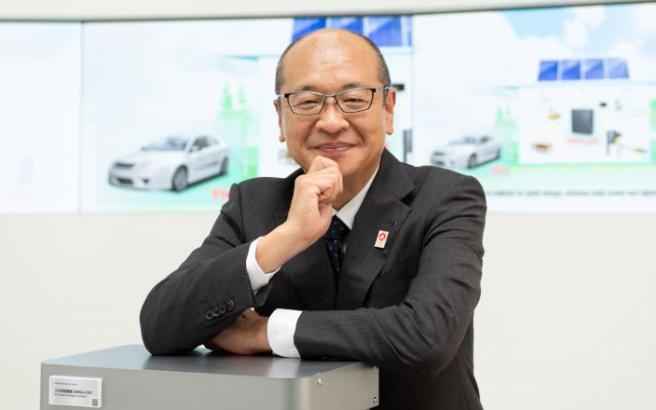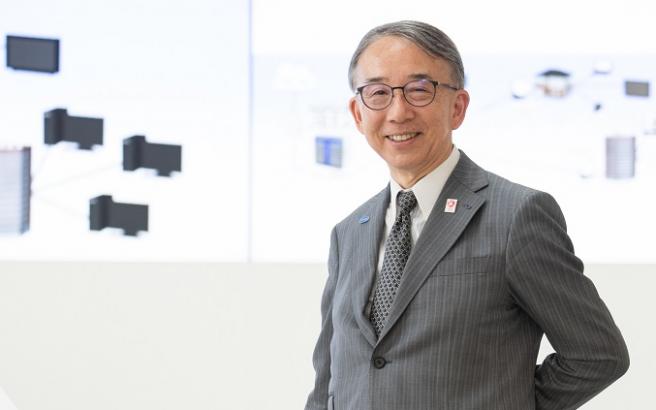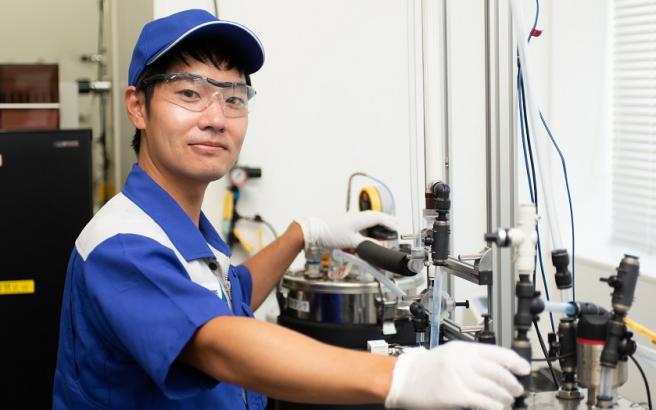Contributing to Society through Innovations in Optical Fiber Communication
Awarded the Title of “IEEE Fellow”
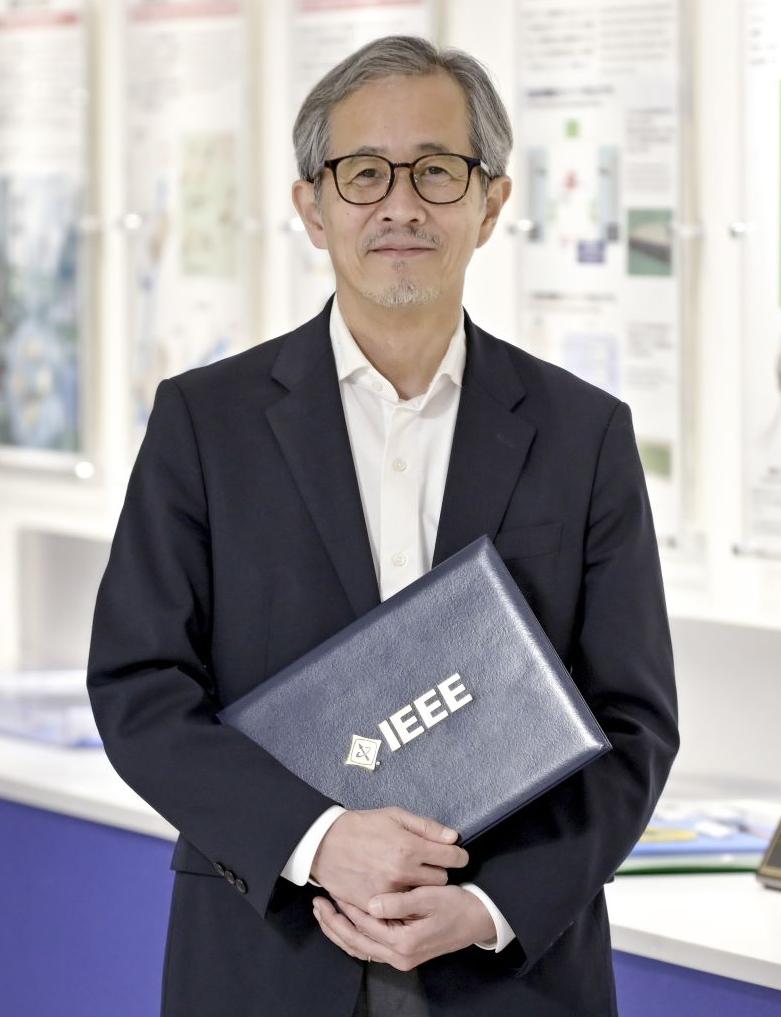
Masayuki Shigematsu
Chief Engineer, Innovative Network Solution Department, New Business Marketing & Promotion Division
Chief Engineer, R & D Unit
Senior General Assistant Manager, Human Resources Development Department
I am honored to have been awarded the title of "Fellow" by the Institute of Electrical and Electronics Engineers (IEEE) in recognition of my contributions to the field of fiber optic amplification technology. Being selected as a Fellow of IEEE, the world's largest professional association for electrical and electronic engineers, is a significant honor as an engineer. This achievement reflects my efforts to develop technologies and products that serve society, as a member of the Sumitomo Electric Group, which plays a pivotal role in supporting social infrastructure. I would like to express my sincere gratitude to all my colleagues who have been involved in this endeavor.
IEEE Fellow: A Recognition for Research with Societal Impact
IEEE is one of the most prestigious organizations in the fields of electrical and information engineering—fields in which the Sumitomo Electric Group is deeply involved. With over 480,000 members in more than 190 countries, it leads global efforts in scientific research, academic publishing, and the standardization of industrial technologies. For example, the well-known Ethernet communication standard IEEE 802.3 was defined by an IEEE standards committee. Through such initiatives, IEEE plays a key role in enhancing interoperability among a wide range of products and services.
Within IEEE, the rank of “Fellow” is the highest membership grade and is awarded annually to members who have made extraordinary contributions in their respective fields. Fellows are selected through a rigorous review process. While the specific criteria for selection are not publicly disclosed, significant emphasis is placed on how much the candidate’s research has contributed to society.
I was recognized for my contributions to the advancement of optical fiber amplification technology. Allow me to briefly explain this field of optical communication. In optical communication systems, electrical signals are first converted into light signals, which then travel through optical fibers as pulses representing ones and zeros. However, as these signals propagate over long distances, they gradually attenuate. To maintain signal strength, it was once necessary to convert the optical signals back into electrical signals at intervals, amplify them using electrical circuits, and then convert them back into light—a process that required high-speed electronics and complex repeaters, especially as communication speeds increased.
A breakthrough came in the late 1980s with the development of erbium-doped fiber (EDF) amplification technology. This innovation involved doping the signal-carrying part of the optical fiber with a small amount of erbium, a rare-earth element. By irradiating the fiber laterally with a strong light of a specific wavelength (called a pump light), the energy state of the erbium ions is raised. This energy can then be used to directly amplify the optical signal—without converting it back into an electrical signal. This revolutionary technology had a profound impact on my research and on the future of optical communications.
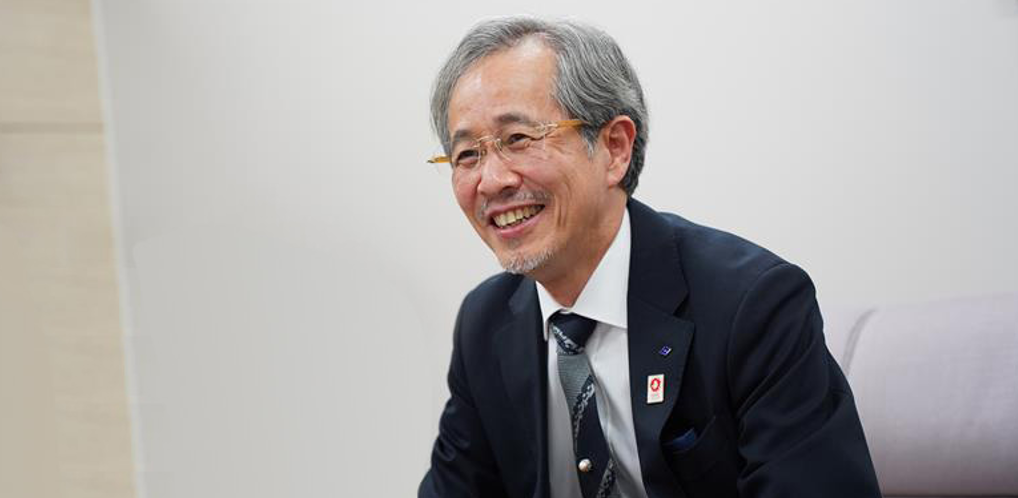
Optical Fiber Amplification Technology That Powers Our Seamless Communication
When I joined Sumitomo Electric in 1985, Japan had just completed a 3,400-kilometer optical fiber trunk line—known as the Japan Vertical Route—stretching from Asahikawa in Hokkaido to Kagoshima in the south. This milestone marked the beginning of full-scale operation for long-distance, high-capacity optical communication systems using the 1.3 µm wavelength band.
My first assignment was to develop a next-generation optical fiber—dispersion-shifted fiber—optimized for the 1.55 µm band, which offers the lowest signal attenuation in optical fibers. I created my own electromagnetic simulation tools, calculated key transmission properties, and designed fibers that were ultimately put into practical use. This work gave me a deep foundation in optical fiber engineering.
That experience proved invaluable when, in my fourth year at the Company, I encountered EDF amplification technology. We successfully developed EDF with high amplification efficiency at a time when the necessary components were still scarce. I used an argon laser as a pump light source and built an evaluation setup from scratch using free-space optics on a precision optical bench. The thrill of witnessing optical amplification for the first time is something I still remember vividly.
My next challenge was to develop technologies to boost the power of optical signals through amplification and distribute them across multiple paths. Around 1990, Japan introduced the VI&P Concept, a vision for next-generation communications based on video distribution via optical access networks. To realize this concept, it was essential to overcome splitting loss—the signal degradation that occurs when distributing light to multiple users—using optical amplifiers.
At the time, analog transmission—proven in cable television—was adopted for video services, which placed extremely severe requirements on amplifier performance in terms of noise and distortion. I built analytical models to assess how various components—amplifiers, fibers, and optics—affected video signal quality, and established optimized design methods for both EDFs and dispersion-compensating fibers. The result was an efficient, high-quality video distribution system, which was put into commercial use in 1997 in Totsuka, Yokohama. This technology became a foundation for today’s connected lifestyle, where we enjoy rich video content anytime, anywhere, at low cost.
Building on this success, I later extended optical amplification to long-haul backbone networks, leading R&D for optical amplifier relay systems and wavelength division multiplexing (WDM) transmission systems. These systems were eventually adopted by Japanese telecom carriers. I will never forget the days I spent working side by side with field engineers, overseeing installations and commissioning WDM transmission systems across the country.
While I led the R&D of these technologies, their real-world success was only possible thanks to the outstanding efforts of colleagues throughout the Sumitomo Electric Group, who contributed to commercialization, deployment, and maintenance. Most importantly, we were able to achieve these results because of the trust and support of our customers. Being named an IEEE Fellow is not just a personal honor—it is a recognition I share with everyone who made these achievements possible.

A Culture That Embraces Young Talent Drives Innovation
As a student, I was deeply engaged in the study of light, and I joined Sumitomo Electric, a company that plays a key role in social infrastructure, with the desire to contribute to society through research and to develop technologies that support the future of information and communications. From the very beginning, I was entrusted with a major project: designing low-loss optical fibers. Since then, I have been involved in the development of optical passive components and optical filters used in monitoring systems for optical fiber networks.
I was given the opportunity to take on challenges early in my career, and thanks to a corporate culture that empowers young engineers with real responsibility, I was able to pursue a wide range of research topics with confidence. While the historical context certainly played a role, I believe that the open, bottom-up environment at Sumitomo Electric Group—one that values initiative and respects the drive of younger generations—has been a key source of the Group’s technological innovation.
Sumitomo Electric also provides researchers and engineers with diverse opportunities to broaden their experience. After working at several R&D laboratories in the information and communications field, I was appointed in 2005 to lead our U.S. R&D subsidiary in Silicon Valley, Innovation Core SEI, Inc., where I served as President for about four years. There, I promoted open innovation in collaboration with venture capital firms and took on numerous technological challenges.
One of the most rewarding achievements during that time was helping lay the groundwork for the practical application of Thunderbolt™ by bridging communication and coordination between U.S. customers and our Japanese engineering teams. It was a powerful example of how international collaboration can drive breakthrough innovation.

Thunderbolt™4 Cable
Fostering Cross-Disciplinary Collaboration Within Sumitomo Electric Group
I currently serve on a committee of IEEE Region 10 (Asia-Pacific), to which Japan officially belongs. Looking ahead, I expect even more opportunities for international collaboration. In today’s world, where cross-disciplinary partnerships are key to achieving sustainable social development, IEEE itself is seeing an increasing trend of interaction between experts from different domains. From these intersections, new fields of research and groundbreaking innovations are emerging.
From my experience working in the fast-paced business environment of the United States, I have come to strongly believe that connections with researchers and engineers outside one's own field are a powerful source of information, inspiration, and fresh ideas. What is remarkable about the Sumitomo Electric Group is that such interdisciplinary collaboration is not just encouraged—but realized within the organization itself.
Engineers and researchers, when deeply immersed in their specialties, can sometimes lose sight of developments in adjacent fields. Sumitomo Electric Group has identified three strategic focus areas: Energy, Info-communications, and Mobility. To meet complex and evolving social needs such as GX (green transformation), DX (digital transformation), and CASE (connected, autonomous, shared, electric mobility), we actively promote cross-functional collaboration that blends these domains.
By bringing together diverse perspectives and areas of expertise, we create an environment where ideas transcend traditional boundaries. This not only enhances our collective R&D capabilities but also offers each researcher and engineer a rich opportunity for personal growth—deepening their expertise, broadening their perspective, and gaining new skills along the way.
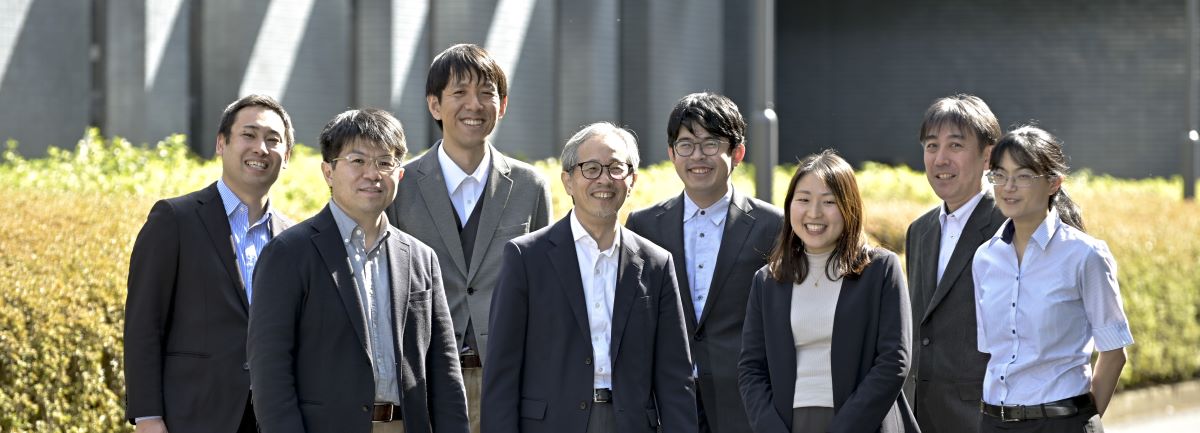
Related Information
[Product Information] Thunderbolt™4 Cable
[External Link] IEEE Japan Council
